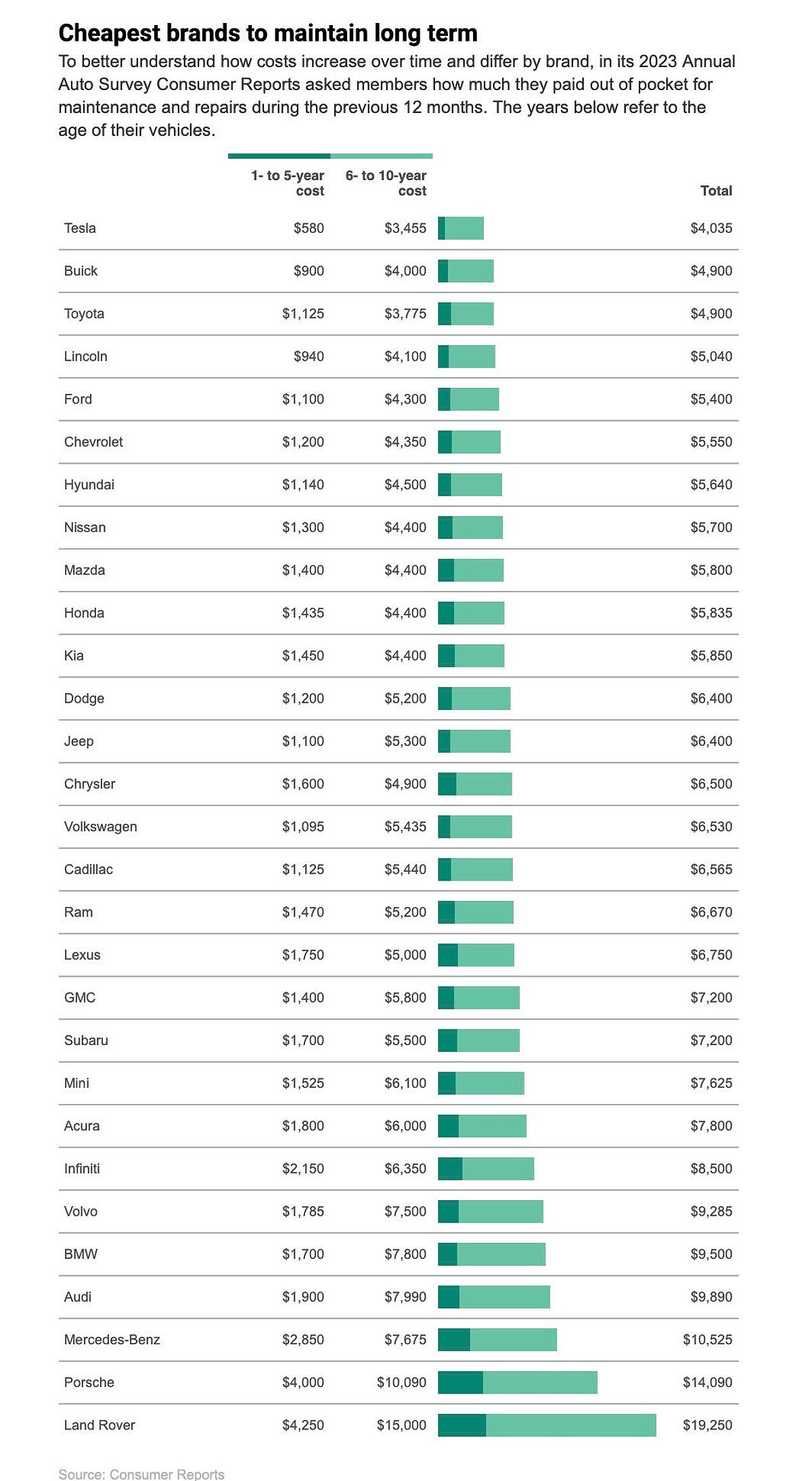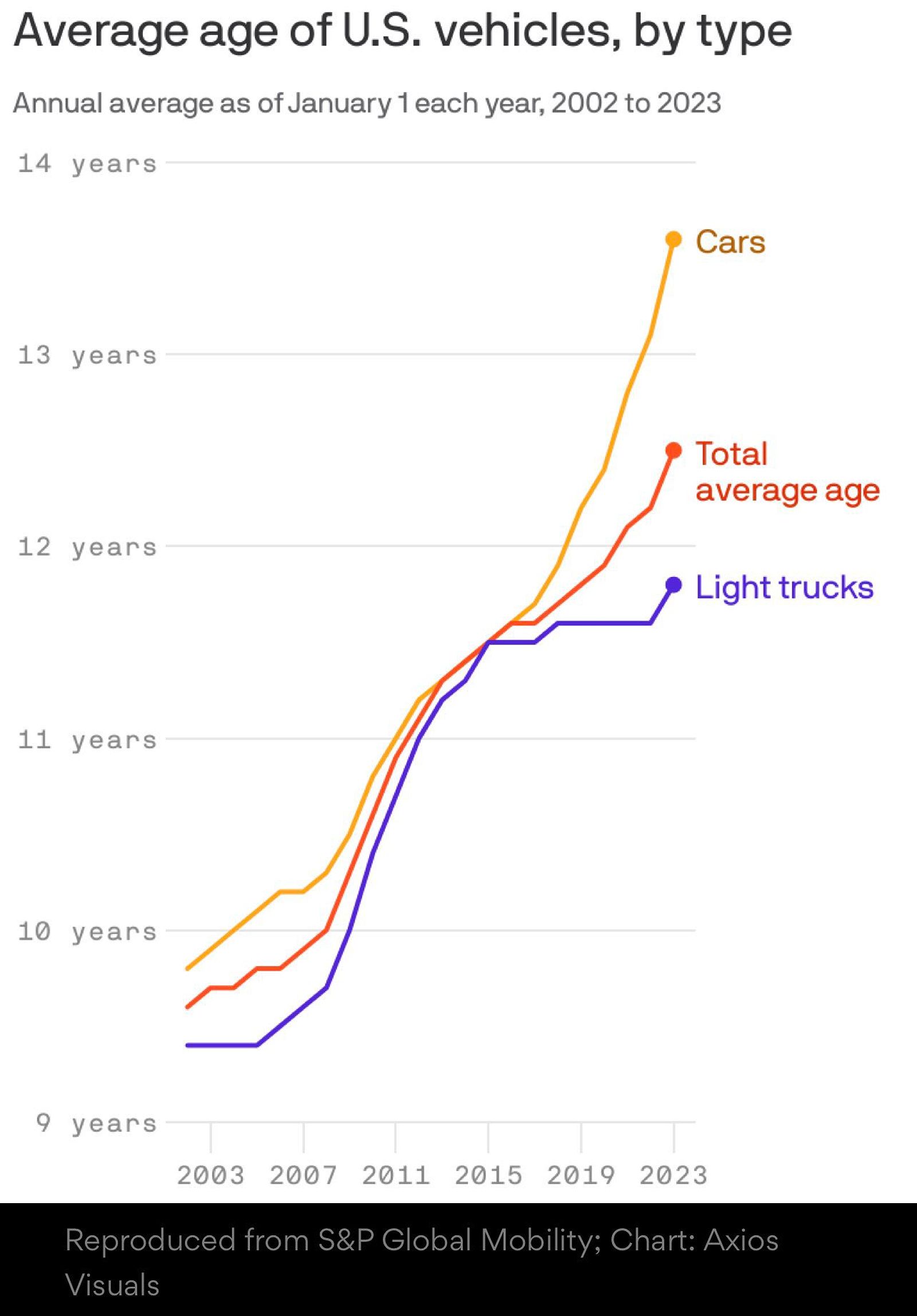When To Get A New Car: A Practical Guide For Frugal Car Owners
Your car has been a reliable companion for years, but lately, warning lights are flashing more frequently and repair bills are mounting. You’re wondering if it’s time to get a new car, but the thought of car payments makes you hesitant. This guide helps you assess your car’s condition, weigh the financial implications of upgrading, and make a smart decision about when to get a new car that fits your budget.
The Cost of Keeping an Old Car Running
Let’s face it: keeping an aging vehicle can feel like a game of financial roulette. At first glance, it seems like you’re saving money, but as time goes on, those costs can spiral out of control. The financial implications of maintaining an older vehicle can be daunting, especially when you factor in rising repair costs, the need for regular maintenance, and the availability of parts.
Rising Repair Costs
Ah, the joys of owning an older car. As your vehicle ages, the likelihood of needing significant repairs increases. For instance, a failing transmission can set you back thousands, and that’s just the tip of the iceberg. Other major repairs, such as engine overhauls or electrical issues, may soon follow. While your old car might be a reliable companion, the escalating repair bills can quickly rival the cost of a new vehicle. Is it really worth it?

Maintenance Schedule
Regular maintenance is the lifeline of any aging car. Think of it as preventive medicine; neglecting routine services, like oil changes and tire rotations, can lead to catastrophic problems that cost you more in the long run. Keeping a maintenance schedule is vital. It’s not just about keeping your car running; it’s about avoiding those pesky financial surprises that come with a neglected vehicle.
Parts Availability
As your car ages, finding replacement parts can become a scavenger hunt. For older models, parts may be discontinued or only available at a premium price. This can lead to inflated repair costs and longer wait times for necessary fixes. The frustration of sourcing parts can make you wonder if it’s time to trade in your old friend for something newer and more reliable.
Weighing the Pros and Cons
Owning an older car does come with some advantages, such as lower initial purchase costs. However, the cons can quickly overshadow these benefits. Higher repair costs, an increased chance of breakdowns, and potentially lower resale value can make keeping that aging vehicle a less appealing option over time.
Understanding When to Get a New Car: The Depreciation Curve
One of the key factors to consider when contemplating when to get a new car is depreciation. Understanding how a vehicle’s value decreases over time can help you make informed decisions about selling or trading in your current car.
Depreciation Basics
Depreciation is the decline in value of your vehicle as it ages. Cars typically lose a significant portion of their value in the first few years—some estimates suggest a drop of up to 20% in the first year alone. This steep decline can have a profound impact on your finances, especially if you plan to sell or trade in your vehicle.
The Steepest Decline
Most vehicles experience their most significant depreciation during the first three years. After that initial drop, the rate of depreciation slows, but it’s essential to understand this curve when deciding when to sell your car. Timing your sale can be crucial in maximizing your financial outcome.
Maximizing Resale Value
To get the most out of your car when it’s time to sell, maintaining it well is key. Keep detailed service records, ensure the vehicle is clean, and address minor repairs promptly. By understanding the depreciation curve and timing your sale wisely, you can maximize your car’s resale value.

Statistics and Data
A visual representation of the depreciation curve can be quite enlightening. Many vehicles lose significant value in the early years, but after that, the slope flattens. Understanding this curve can help you make more informed decisions about when to sell and when to consider purchasing a new vehicle.
When Safety Outweighs Savings
Safety should always be at the forefront of your decision-making process when evaluating whether to replace your vehicle. As cars age, they may lack modern safety features that could protect you and your passengers in the event of an accident.
Safety Features in Newer Cars
Modern vehicles come equipped with advanced safety technologies, such as automatic emergency braking, lane departure warnings, and adaptive cruise control. These features can significantly enhance safety on the road. As you weigh the costs of keeping your current vehicle, consider whether it meets today’s safety standards.
The Risks of Driving an Older Car
Driving an aging car can expose you to potential safety risks. Worn tires, outdated safety systems, and mechanical failures can increase the likelihood of accidents. If you frequently drive in high-traffic areas or on highways, evaluating these risks is essential in determining when to get a new car.
Compelling Examples and Case Studies
Statistics reveal that older vehicles are often involved in more accidents due to a lack of modern safety features. While your older car may have served you well, the potential consequences of driving a vehicle without updated safety technology can be significant. It’s worth considering the value of your safety and that of your passengers.
Weighing the Pros and Cons of Safety Features
While older cars can be more affordable, the absence of essential safety features can lead to higher insurance premiums and an increased risk of accidents. Weighing these factors is crucial in making an informed decision about when to replace your vehicle.
Exploring Affordable Alternatives
If you’ve decided that it may be time to get a new car, consider the alternatives available to you. There are options that can satisfy both your financial goals and your need for a reliable vehicle.
Used Cars
Purchasing a used car can be a savvy financial move. Used vehicles often come at a lower price point, allowing you to save money while still obtaining a reliable vehicle. Many used cars are still under warranty, providing peace of mind without the higher costs associated with new cars.

Electric Vehicles
Electric vehicles (EVs) are gaining traction and can offer long-term savings through lower operating costs. While the initial purchase price may be higher, the savings on fuel and maintenance can make them an appealing option. Additionally, government incentives may be available to help offset the cost of purchasing an EV.
Tips for Buying Used Cars
When shopping for a used car, it’s essential to do your homework. Check vehicle history reports, get pre-purchase inspections, and negotiate prices to ensure you find a reliable vehicle. These steps can help you avoid potential pitfalls and secure a good deal.
Pros and Cons of Alternatives
While buying a used car or an electric vehicle can save you money, there are potential downsides. Used cars may come with hidden issues, and EVs can have limited availability depending on your location. Weighing these factors is crucial to making an informed decision.
Setting a Realistic Budget
Creating a budget is a critical step in the process of deciding when to get a new car. Understanding your financial situation can help you make informed choices about your next vehicle.
Calculating Total Costs
When budgeting for a new or used car, it’s essential to consider all associated costs. This includes the purchase price, financing options, insurance, taxes, and registration fees. Having a comprehensive view of your financial obligations will help you make better decisions.
Negotiating a Deal
Once you’ve established a budget, it’s time to negotiate the price of your vehicle. Research market values, compare offers, and use your bargaining power to secure a good deal. Being prepared can help you avoid overpaying for your next vehicle.
Financing Options
Understanding your financing options is vital when considering a new car purchase. Whether you choose to buy outright, finance through a loan, or lease, knowing the implications of each option will help you make the best choice for your financial situation.
The Financial Impact of Your Decision
While buying a new car can provide benefits, such as lower monthly payments, it may also lead to interest charges and potential debt accumulation. Carefully weighing the pros and cons of each financing option will help you make a decision that aligns with your financial goals.
FAQ
-
Q: What is the average lifespan of a car?
- A: The average lifespan of a car is around 10-15 years, but with proper maintenance, some cars can last much longer.
-
Q: How often should I get my car serviced?
- A: Follow the manufacturer’s recommended maintenance schedule for your specific car model.
-
Q: How can I find a reliable used car?
- A: Check the vehicle history report, get a pre-purchase inspection, and negotiate a fair price.
Conclusion
Deciding when to get a new car involves careful consideration of various factors, including the financial implications of maintaining an older vehicle, understanding depreciation, and prioritizing safety. By evaluating these elements and exploring alternatives, you can make informed decisions that align with your frugal principles.
Ultimately, whether you choose to keep your current vehicle or invest in a new one, a well-thought-out approach will help you navigate the complexities of car ownership while staying within your budget. By taking the time to assess your situation, you’ll find the right moment to make that switch, ensuring both your financial well-being and safety on the road.



